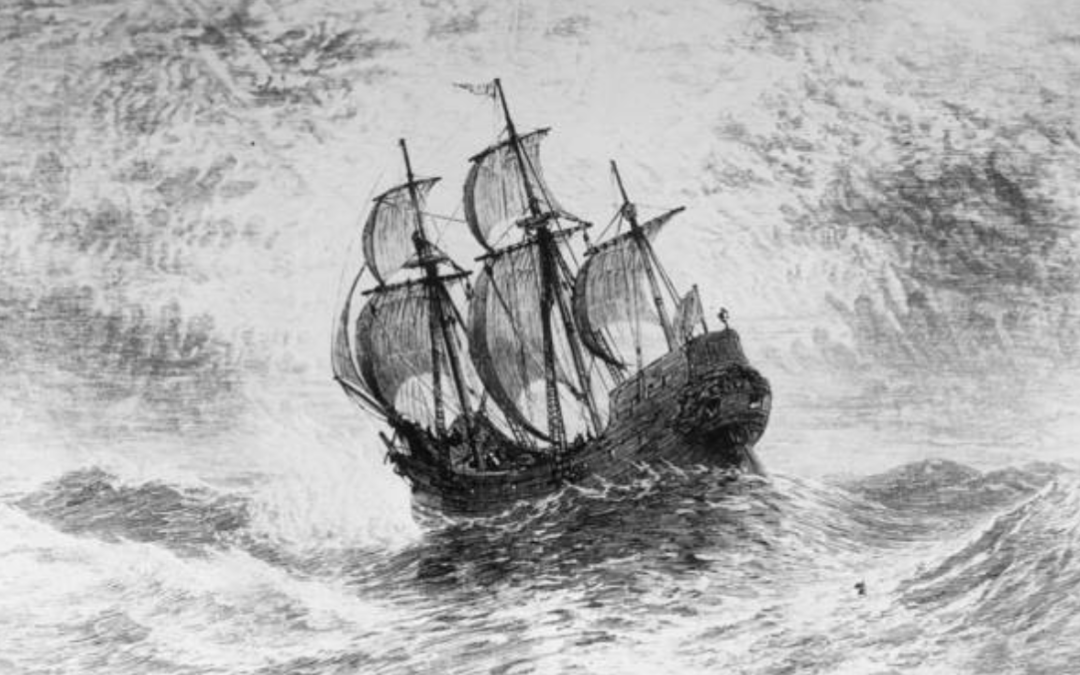We conclude looking at the adversity the 1620 voyage of the Pilgrims to the New World to gain perspective on what our own enterprizes may face:
- The congregation had shrunk to one-sixth what it had been when plans for the New World were formulating. It was down to 50 Pilgrims, which was just less than half the 102 people on the Mayflower.
- One of those who dropped out was Robert Cushman. The unrelenting months of tension and stressed were causing “ . . . a searing pain . . . like a bundle of lead, crushing my chest.” The sailing was three months behind schedule, meaning the arrival into the New World through winter seas would be during the cold season. Cushman stayed in England.
- The attitude of First Nations peoples was unknown. Indians might be violent. Horrors stories of slaughter circulated. What parents would subject their children to that possibility?
- By early September, westerly gales began to howl across the North Atlantic. Provisions, already low when they first set out from Holland, were further eroded by more than a month of delays (see above), as the passengers were cooped up aboard the ship. But on September 6th, the Mayflower sailed for the New World.
The Trans-Atlantic Voyage
- Fierce wind exploded against the old ship’s topside, breaking a timber.
- Water was a problem. European water was unhealthy, making beer and wine a necessity. When food became scarce, scurvy (swollen gums and loose teeth from a lack of fresh fruit and nutritious food) impacted the seafarers.
- The “between” was a storage area turned living quarters for most of the 102 people on the ship. It was a dank, airless space about 75 feet long and not even five feet high that separated the hold (below) from deck (above). It was more of a crawl space than a place to live, made even more claustrophobic by the passengers’ attempts to provide themselves some privacy. Thin-walled cabins with omnipresent chamber pots. This was not a Carnival Cruise Line ship.
- The hired sailors and “Strangers,” scorned and mocked the seasickness of the Pilgrims.
- But one such young man – who spoke of wanting to cast them overboard (after their death) – was particularly harsh and ridiculing – was actually the first to die. Others interpreted this as the “just hand of God upon him.”
- According to Philbrick, the Mayflower averaged a miserable two miles per hour. Still, they pushed on to within smelling distance of the continent — sea gulls appeared, the water changed color, and land was sighted on November 9, 1620.
Let’s Make History
But all these negatives were more than balanced off by one fact: the Pilgrim belief that God had willed them to pursue freedom in the New World. No argument or negative could stand against this one spiritual reality.
Like the Pilgrims, we face many difficulties (I Corinthians 16:9), yet we push on for the glory of God. Jamestown, 1620 is in the history books. Want to make your own history? It may be expensive, but God will help you. Even if it does not get into school history books, it will be in your history book and His.


Wow! What a hard life they had. Doesn’t it seem like the easier people have it the more they complain?
Thank you as always Keith. I hope you’re encouraged today.
Thomas
>